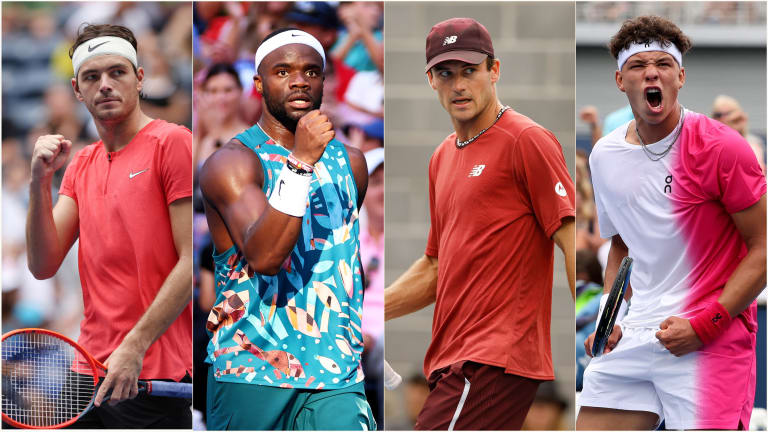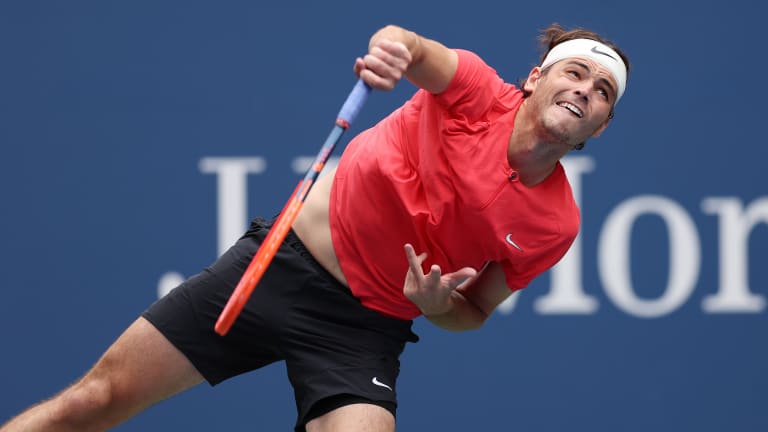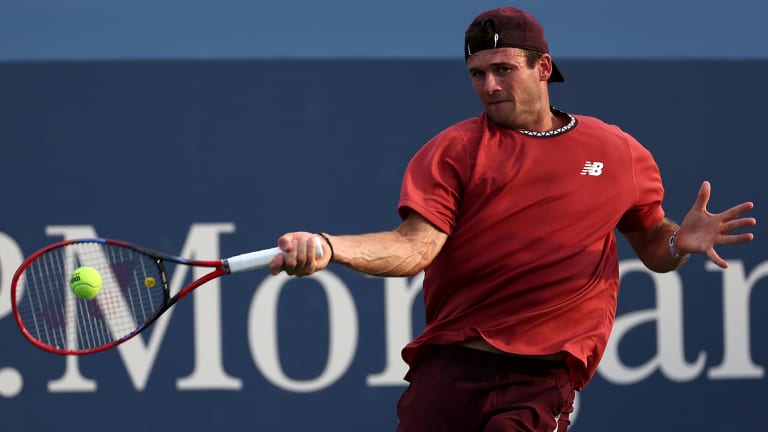Forehand: Tommy Paul, Chris Eubanks
Back in the early ‘80s, American Jimmy Arias pioneered the modern forehand, a full-bodied drive that took the concept of racquet-head speed to unprecedented levels. Ivan Lendl, Agassi and Jim Courier further advanced what Arias had begun. Additional excellent American forehands came later in the form of Roddick and James Blake, followed by Sam Querrey and John Isner.
Many active Americans have great forehands. But to win big these days, what’s needed is yet more aggression and a certain X factor of freedom that can instantly snap open a rally, akin to the way Carlos Alcaraz has won so many points. Call it disruption at the highest level.
Here again, America’s best is Paul, owner of a whip-like stroke that figures to get even more imposing in the years to come. Honorable mention goes to Eubanks, who over the course of his run to this year’s Wimbledon quarterfinals demonstrated significant understanding of the need to swing aggressively as often as possible.


